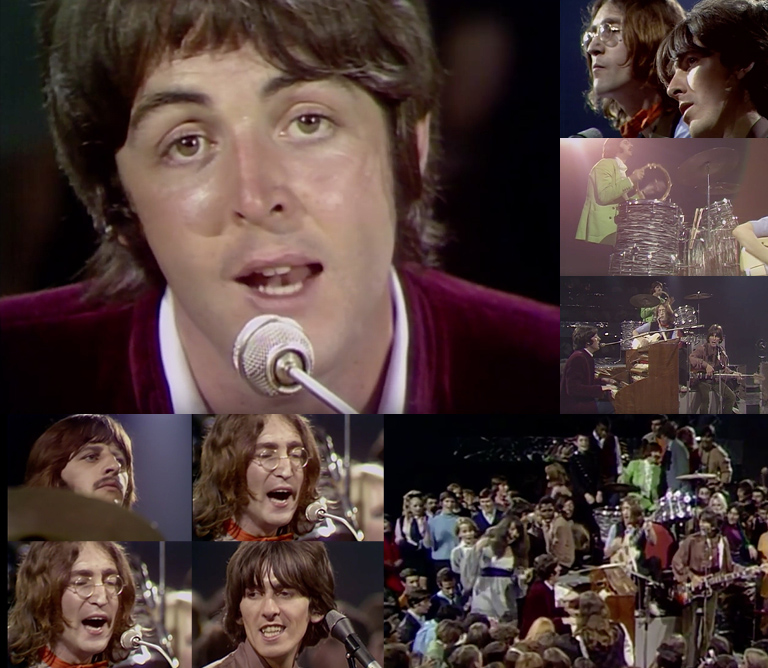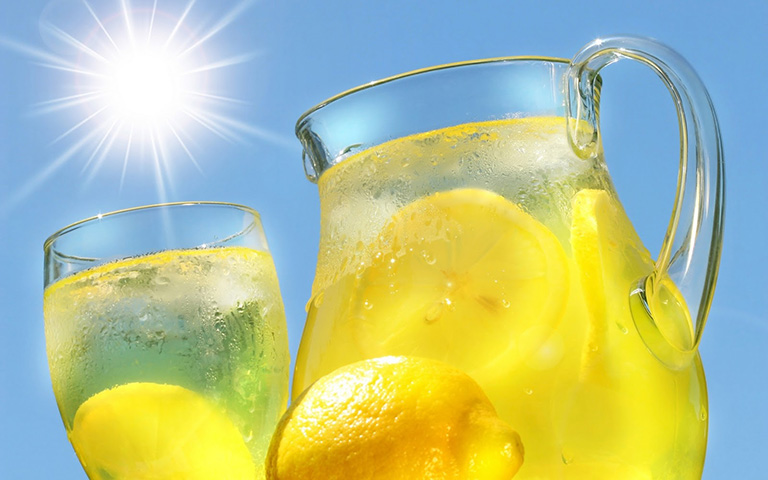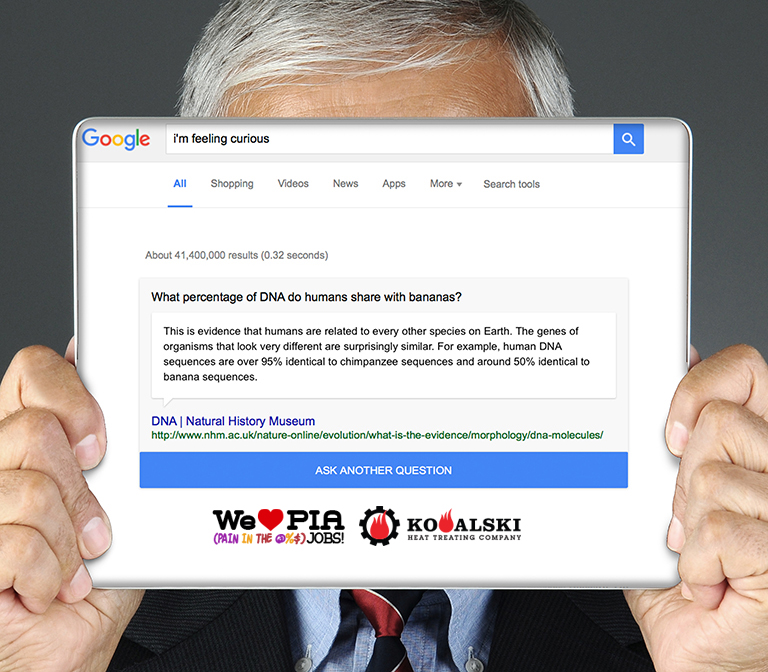“Hey Jude” – Happy Birthday!
You can watch the “Hey Jude” video HERE. The video was first broadcast on David Frost’s Frost On Sunday show, four days after it was filmed. At that point transmission was in black and white although the promo was originally shot in colour. It was first aired in America a month later on 6 October 1968, on The Smotheres Brothers Comedy Hour. And get The Beatles 1 Video Collection HERE.
“Hey Jude”, released August 26th, 1968, is a song written by Paul McCartney, and also credited to John Lennon of the Beatles. The ballad, evolved from “Hey Jules”, a song McCartney wrote to comfort John Lennon’s son, Julian during his parent’s divorce. The song begins with a verse-bridge structure, incorporating McCartney’s vocal performance and piano accompaniment – with a now famous shift to a fade-out coda that lasts for more than four minutes.
For our trivia and music buffs, here is some interesting trivia to go along with this great song (thanks Wikipedia!)
- “Hey Jude” was the first single from the Beatles’ record label Apple Records. More than seven minutes in length, it was at the time the longest single ever to top the British charts
- It spent nine weeks at number one in the United States, the longest for any Beatles single and tied the “all-time” record, at the time, for the longest run at the top of the US charts.
- The single has sold approximately eight million copies and is frequently included on professional critics’ lists of the greatest songs of all time. In 2013, Billboard named it the 10th biggest song of all time.
- In May 1968, John Lennon and his wife Cynthia Lennon separated because of John’s affair with Yoko Ono. The following month Paul drove out to visit Cynthia and John’s son, Julian, at Kenwood, the family’s home in Weybridge. (Cynthia had been part of the Beatles‘ social circle since before the band’s rise to fame in 1963).
- McCartney later said he found it “a bit much for them suddenly to be personae non gratae and out of my life”. Cynthia Lennon recalled of McCartney’s surprise visit: “I was touched by his obvious concern for our welfare … On the journey down he composed ‘Hey Jude’ in the car. I will never forget Paul’s gesture of care and concern in coming to see us.”
- The song’s original title was “Hey Jules”, and it was intended to comfort Julian Lennon from the stress of his parents’ separation. McCartney later said, “I knew it was not going to be easy for him”, and that he changed the name to “Jude” “because I thought that sounded a bit better”.
- According to music journalist Chris Hunt, in the weeks after writing the song, McCartney “tested” his latest composition on anyone too polite to refuse. And that meant everyone. On 30 June, after recording the Black Dyke Mills Band’s rendition of his instrumental, McCartney stopped at a village in Bedfordshire and performed “Hey Jude” at a local pub.
- When introducing the composition to Lennon, McCartney assured him that he would “fix” the line “the movement you need is on your shoulder”, reasoning that “it’s a stupid expression; it sounds like a parrot.” Lennon replied: “You won’t, you know. That’s the best line in the song.” (McCartney retained the phrase and he later said of his subsequent live performances of the song: “that’s the line when I think of John, and sometimes I get a little emotional during that moment.”
- Although McCartney originally wrote “Hey Jude” for Julian, John Lennon thought it had actually been written for him. In a 1980 interview, Lennon stated that he “always heard it as a song to me” and contended that, on one level, McCartney was giving his blessing to Lennon and Ono’s relationship, while, on another, he was disappointed to be usurped as Lennon’s friend and songwriting partner.
- Music critic and author Tim Riley writes: “If the song is about self-worth and self-consolation in the face of hardship, the vocal performance itself conveys much of the journey. He begins by singing to comfort someone else, finds himself weighing his own feelings in the process, and finally, in the repeated refrains that nurture his own approbation, he comes to believe in himself.”
And for our musically inclined:
- “Hey Jude” begins with McCartney singing lead vocals and playing the piano. The patterns he plays are based on three chords: F, C, and B flat (I, V and IV). The main chord progression is “flipped on its head”, for the coda, since the C chord is replaced by E flat. Everett comments that McCartney’s melody over the verses borrows in part from John Ireland’s 1907 liturgical piece Te Deum, as well as (with the first change to a B flat chord) suggesting the influence of the Drifters’ 1960 hit “Save the Last Dance for Me”.
- The second verse of the song adds accompaniment from acoustic guitar and tambourine. Tim Riley writes that, with the “restrained tom-tom and cymbal fill” that introduces the drum part, “the piano shifts downward to add a flat seventh to the tonic chord, making the downbeat of the bridge the point of arrival (‘And any time you feel the pain‘).”
- At the end of each bridge, McCartney sings a brief phrase (“Na-na-na na …”), supported by an electric guitar fill, before playing a piano fill that leads to the next verse. This vocal phrase serves to “reorient the harmony for the verse as the piano figure turns upside down into a vocal aside”. Additional musical details, such as tambourine on the third verse and subtle harmonies accompanying the lead vocal, are added to sustain interest throughout the four-verse, two-bridge song.
- The verse-bridge structure persists for approximately three minutes, after which the band leads into a four-minute-long coda, consisting of nineteen rounds of the song’s double plagal cadence. During this coda, the rest of the band, backed by an orchestra that also provides backing vocals, repeats the phrase “Na-na-na na” followed by the words “hey Jude” until the song gradually fades out. In his analysis of the composition, musicologist Alan Pollack comments on the unusual structure of “Hey Jude”, in that it uses a “binary form that combines a fully developed, hymn-like song together with an extended, mantra-like jam on a simple chord progression”.
- Riley considers that the coda’s repeated chord sequence (I-VII-IV-I) “answers all the musical questions raised at the beginnings and ends of bridges”, since “The flat seventh that posed dominant turns into bridges now has an entire chord built on it.” This three-chord refrain allows McCartney “a bedding … to leap about on vocally”, so he ad-libs his vocal performance for the rest of the song.
BONUS: Can you guess the name of the single on the flip side of the 45? Be the first caller with the right answer and I’ll send you a Kowalski collector t-shirt!









